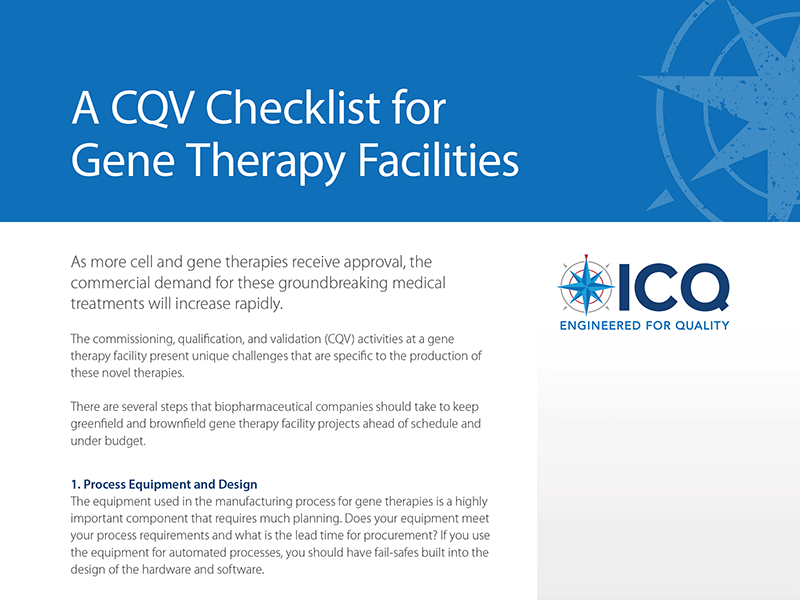Executive Briefs
1. Process Equipment and Design
The equipment used in the manufacturing process for gene therapies is a highly important component that requires much planning. Does your equipment meet your process requirements and what is the lead time for procurement? If you use the equipment for automated processes, you should have fail-safes built into the design of the hardware and software. Seek a partner that can help you through the early basis of design stages to ensure you meet manufacturing timing and requirements as well as achieve regulatory compliance.




